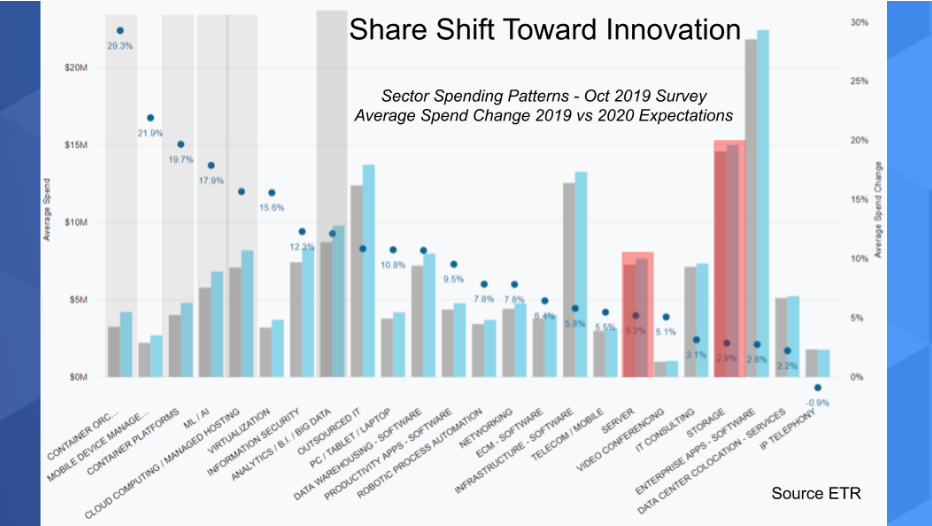The trillionaires club: How big data, cloud and AI are powering the tech economy
- The Tech Platform

- Feb 7, 2020
- 4 min read
Last week Google LLC’s parent company Alphabet Inc. became the fourth U.S. firm to enter the “trillionaires club,” joining the likes of Apple Inc., Microsoft Corp. and Amazon.com Inc. in achieving a $1 trillion market capitalization.
In his latest breaking analysis video, Dave Vellante, chief analyst at SiliconANGLE sister market research firm Wikibon and co-host of SiliconANGLE’s video studio theCUBE, said Alphabet’s and Google’s success is just the latest example of how growth in the tech industry is being driven by an “innovation cocktail” centered on artificial intelligence, big data and the cloud.
“The source of innovation in the technology business has been permanently altered,” Vellante said. “There is a new cocktail of innovation that will far surpass Moore’s law in terms of its impact on the industry.”
The analyst explained that for decades, innovation in the technology industry has gone hand in hand with Moore’s Law, which refers to the observation that the number of transistors in a dense integrated circuit doubles about every two years. The basic premise of Moore’s Law is that whoever is first with the latest and greatest microprocessors has a significant competitive advantage over its rivals, and it’s this that has propelled the industry though the PC era and the client server era.
Now, though, as Moore’s Law slows, it’s being pushed aside by a combination of technologies including big data, cloud, and machine intelligence and AI, which is likely to power a new era of innovation for the next 20 years and beyond.
“The cloud brings three things: agility, scale and the ability to fail quickly and cheaply,” Vellante said. “So it is these three elements and how they are packaged and applied that will in my view determine winners and losers in the next decade and beyond.”
Vellante said this new era of innovation is being driven by three factors: the availability of cheap storage and compute, the emergence of new processor types such as graphics processing units that can power AI workloads effectively, and the vast troves of big data that the major technology companies have accumulated.
For evidence of this shift, we need look no further than the market caps of the top five public companies in the U.S., namely Apple, Microsoft, Google, Amazon and Facebook Inc. Their success and their huge market valuations are primarily thanks to the fact that they’ve all emerged as leaders in “digital” and are among the best-positioned to apply machine intelligence to the massive stores of data they possess.
A quick look at Enterprise Technology Research’s latest market share data, which is a measure of pervasiveness in its spending surveys, seems to underscore that conviction. Over the last decade, Microsoft has maintained its presence in the survey at the 70% and 90% range, while AWS’ and Google’s importance has risen slowly but steadily during the same period.
“If I superimposed traditional enterprise players like Cisco, IBM, Hewlett Packard, Dell, et cetera — that is companies that aren’t competing with data at the core — you would see a steady decline,” Vellante said.
Although Apple with its iPhone perhaps doesn’t quite fit with this story, its real value and the key determining factor in its success has to do with how it combines data with machine intelligence to compete in apps, content and digital services.
The sheer value of that data has enabled those companies to expand into new markets, further driving their growth. Take Amazon, for example, with its recent moves into content, groceries, logistics and so on.
Many of these moves are being financed by the company’s cloud infrastructure business, which represents just 12% of its total turnover but almost half of its operating income.
Additional data from ETR shows there’s a lot of spending action around some of the latest “cocktail” technologies that are powered by AI, cloud and big data. For example, spending on container orchestration is likely to increase by 29% this year, while container platforms will grow 19.7% and machine learning and AI will rise 18%.
“The ETR data shows that the spending action is around cloud, AI and Data,” Vellante said. “And in the red are Moore’s Law technologies like servers and storage.”
At first glance, this all seems like bad news for legacy enterprise “incumbents” such as IBM Corp. and Hewlett-Packard Enterprise Co., which are not digital natives and were not born in the cloud. But the future is far from certain, and members of the trillionaires club need to wary of complacency.
“While the trillionaires look invincible today, history suggests they are not invulnerable,” Vellante said. “The rise of China, India, open source and open models could coalesce and disrupt these guys if they miss a step.”
For the incumbent enterprises, the good news is they don’t have to build any new technology to better compete. Rather, what they need to do is apply machine learning to their unique data models and buy technologies such as AI and cloud that they need from existing suppliers.
“The degree to which they are comfortable buying from these suppliers who may also be competitors will play out over time but I would argue that building that competitive advantage sooner rather than later with data and learning to apply machine intelligence to their unique businesses will allow them to thrive,” Vellante said.
SOURCE:Paper.li











Comments